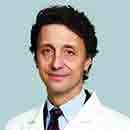Researchers launch 'moonshot' to cure blindness through eye transplants
Published in Health & Fitness
DENVER — As part of a national “moonshot” to cure blindness, researchers at the University of Colorado Anschutz Medical Campus will receive as much as $46 million in federal funding over the next five years to pursue a first-of-its-kind full eye transplantation.
“What was once a dream — to cure blindness — is potentially within our grasp,” the campus’ chancellor, Don Elliman, said during a press conference Monday morning.
The University of Colorado team, led by researcher Dr. Kia Washington, was one of four in the United States that received funding awards from the federal Advanced Research Projects Agency for Health, or ARPA-H. The CU-based group will focus on achieving the first-ever vision-restoring eye transplant by using “novel stem cell and bioelectronic technologies,” according to a news release announcing the funding.
Researchers have already successfully completed the transplant procedure — albeit without vision restoration — in rats. Now they’re set to proceed to larger animals, Washington said.
A team at New York University performed a full eye transplant on a human patient in November 2023, though the procedure — while successful — did not restore the patient’s vision.
Washington said developing a small-animal model, even without vision restoration, was a key milestone in advancing the project. The goal is to fully restore the optic nerve — which carries visual information from the eye to the brain — and to fully connect a patient’s brain with a donor’s eye.
The CU team will work on large animals next to advance “optic nerve regenerative strategies,” the school said, as well as to study immunosuppression, which is critical to ensuring that patients’ immune systems don’t reject a donated organ.
The goal is to eventually advance to human trials.
ARPH-A, created two years ago, will oversee the teams’ work in the coming years. Researchers at 52 institutions nationwide will contribute to the teams. The CU-led group will include researchers from the University of Southern California, the University of Wisconsin, Indiana University and Johns Hopkins University, as well as from the National Eye Institute.
The total funding available for the teams is $125 million, ARPA-H officials said Monday. The money is provided in a contract, not a grant, and ARPA-H officials likened it to a venture capital approach: The four teams will compete alongside each other, and projects showing success or promise will receive full funding over the next five years. The teams may also be combined or lean on each other, depending on their results, Washington said in an interview.
The project is ambitious, officials said. But its success could unlock deeper medical advancements.
“If you can do this, just think about what you could do for traumatic brain injury, for spinal cord injury,” said ARPA-H’s Dr. Calvin Roberts, an ophthalmologist who will oversee the broader project. “And so those of us who work in the eye, what we love about working in the eye is that it’s just a model for things that are going around elsewhere in the body.”
The other teams’ research will include “3-D printed click-lock gel technology with micro-tunneled scaffolds containing stem cell-derived retinal cells,” donor eye procurement and the actual performing of transplant surgeries, according to ARPA-H.
The effort to cure blindness, Washington joked, was “biblical” in its enormity — a reference to the Bible story in which Jesus cures a blind man. She and others also likened it to a moonshot, meaning the effort to successfully put Neil Armstrong and Buzz Aldrin on the moon nearly 50 years ago.
If curing blindness is similar to landing on the moon, then the space shuttle has already left the launchpad, Washington said.
“We have launched,” she said, “and we are on our trajectory.”
_____
©2024 MediaNews Group, Inc. Visit at denverpost.com. Distributed by Tribune Content Agency, LLC.










Comments